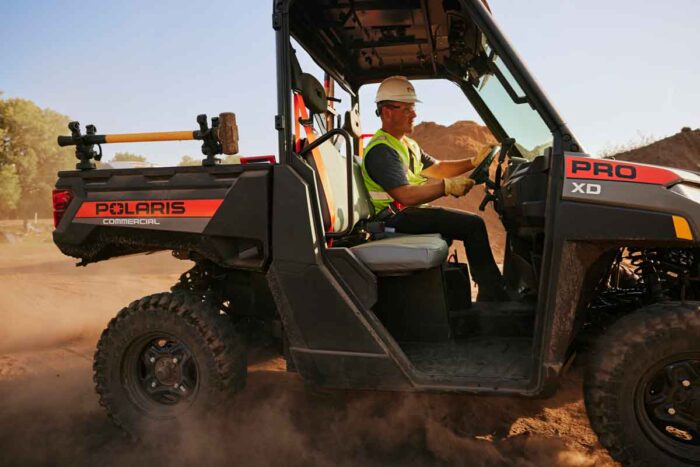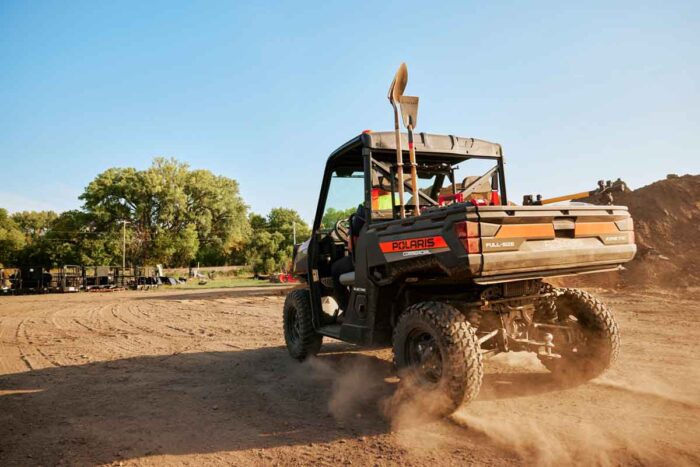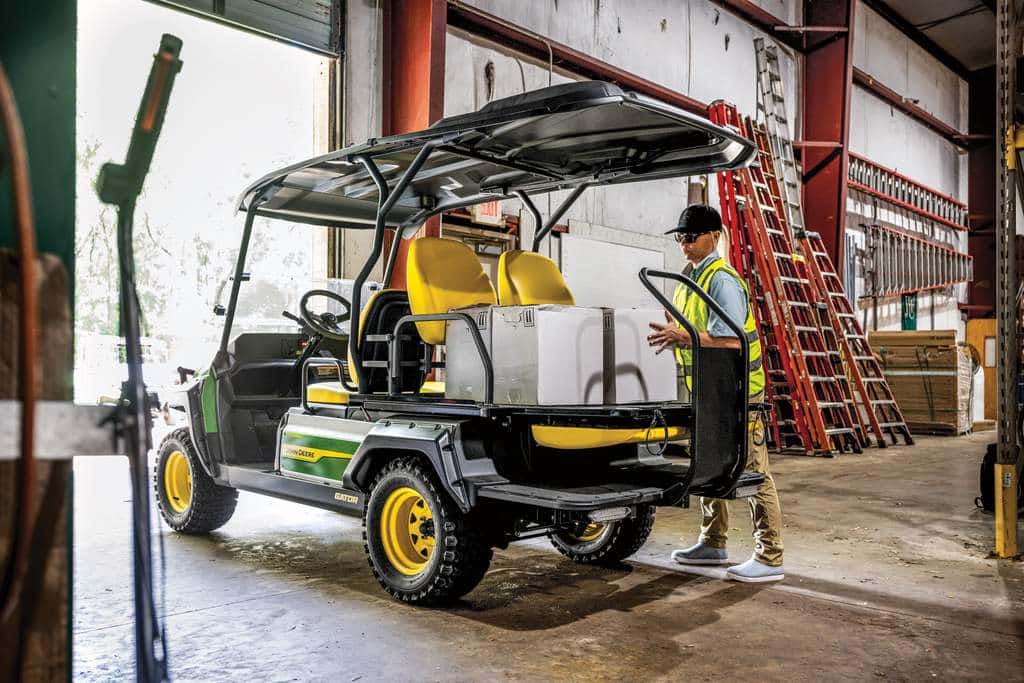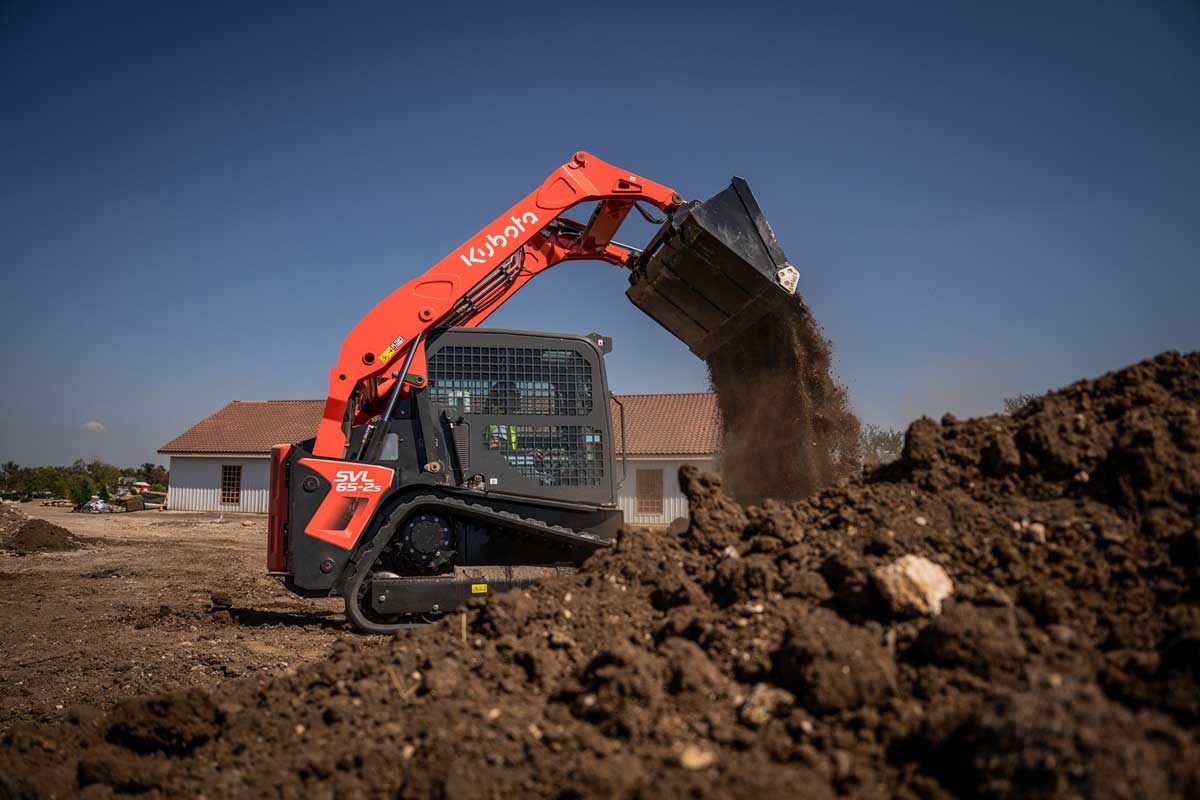Expanding Access: Electric UTVs Are Opening Operational Possibilities

From the trails to the jobsite, the evolution of the work UTV has opened new opportunities across industries. Once purely recreational, UTVs have become essential assets in construction, groundskeeping, government and industrial operations. As demand grows for sustainable solutions in enclosed jobsites — such as underground mines, warehouses, and industrial facilities — electric UTVs are becoming a go-to alternative where traditional vehicles fall short.
Electric UTVs enhance jobsite potential with increased mobility, efficiency and sustainability. Their quiet, zero-emission operation makes them ideal for urban areas and environmentally sensitive worksites such as quarries and mines. With lower maintenance costs, instant torque and greater adaptability, electric UTVs help boost productivity while meeting stricter regulatory and environmental standards.
Agility without Compromise

UTVs are valued for their payload and towing capabilities, as well as their maneuverability across rugged terrain and their narrow footprint. In underground mining operations, for example, standard-sized trucks often struggle to navigate narrow tunnels, reducing efficiency. Harsh conditions, such as standing water, mud and uneven surfaces can also damage traditional vehicles, leading to higher repair costs and vehicle downtime. With their compact size and off-road capabilities, UTVs, on the other hand, thrive in these conditions.
For underground mining, where ventilation is a concern, and for surface mining, where reducing environmental impact is key, electric UTVs provide a powerful, emission-free alternative. Despite misconceptions, electric UTVs offer the same — or greater — power and capacity of gas and diesel counterparts. The all-electric Polaris Pro XD Kinetic, for example, has an incredible 1,250 lbs of cargo capacity and 2,500 lbs max towing.
Free of Emissions

Electric work vehicles offer a clear path to reducing carbon footprints while maintaining efficiency. In enclosed spaces like underground mines and industrial warehouses, equipment running at full capacity can quickly lead to air quality and pollution concerns. Electric UTVs eliminate emissions, reducing the need for costly ventilation systems while helping to improve air quality. Coupled with a quiet powertrain, they are ideal for sustainability-focused projects, noise-restricted areas and emission-free zones.
Beyond air quality benefits, the small footprint of a UTV allows for greater agility in tight spaces, while minimizing ground disturbance — an essential feature for worksites in environmentally sensitive areas like parks, campuses, and remote locations.
Reduce Maintenance

For demanding environments, UTVs like the Pro XD feature robust components, sealed driveline systems and 8-ply non-directional tires built to withstand grueling jobsites. Electric work UTVs offer the same durability with the added benefit of simplified maintenance. With fewer moving parts, electric UTVs eliminate the need for engine oil changes, filter replacements, coolant flushes, spark plugs and clutch maintenance. Routine upkeep is limited to transmission and front drive fluid changes, along with standard wear items like tires and brakes — resulting in reduced downtime and lower costs. For example, maintenance expenses for the Pro XD Kinetic electric UTV are about 60 percent less than those of comparable gas-powered models, meaning fewer replacement parts and less waste.
Battery technology further enhances long-term efficiency. Lithium-ion batteries, for instance, are often designed to last the vehicle’s lifetime, removing battery concerns and allowing crews to stay focused on the job at hand. Flexible charging options, including standard wall outlets and portable generators, make recharging convenient – even in remote or underground jobsites.
Electric work UTVs are redefining mobility and efficiency – especially in environments where emissions and noise have traditionally been limiting factors for work vehicles. By eliminating emissions concerns, reducing operational costs and integrating seamlessly into existing fleets, electric UTVs are removing barriers to productivity. As industries push for greater sustainability and efficiency, these vehicles aren’t just an alternative — they are unlocking new possibilities for how and where work gets done.
Brady Lafrinere is a product manager at Polaris Commercial.




